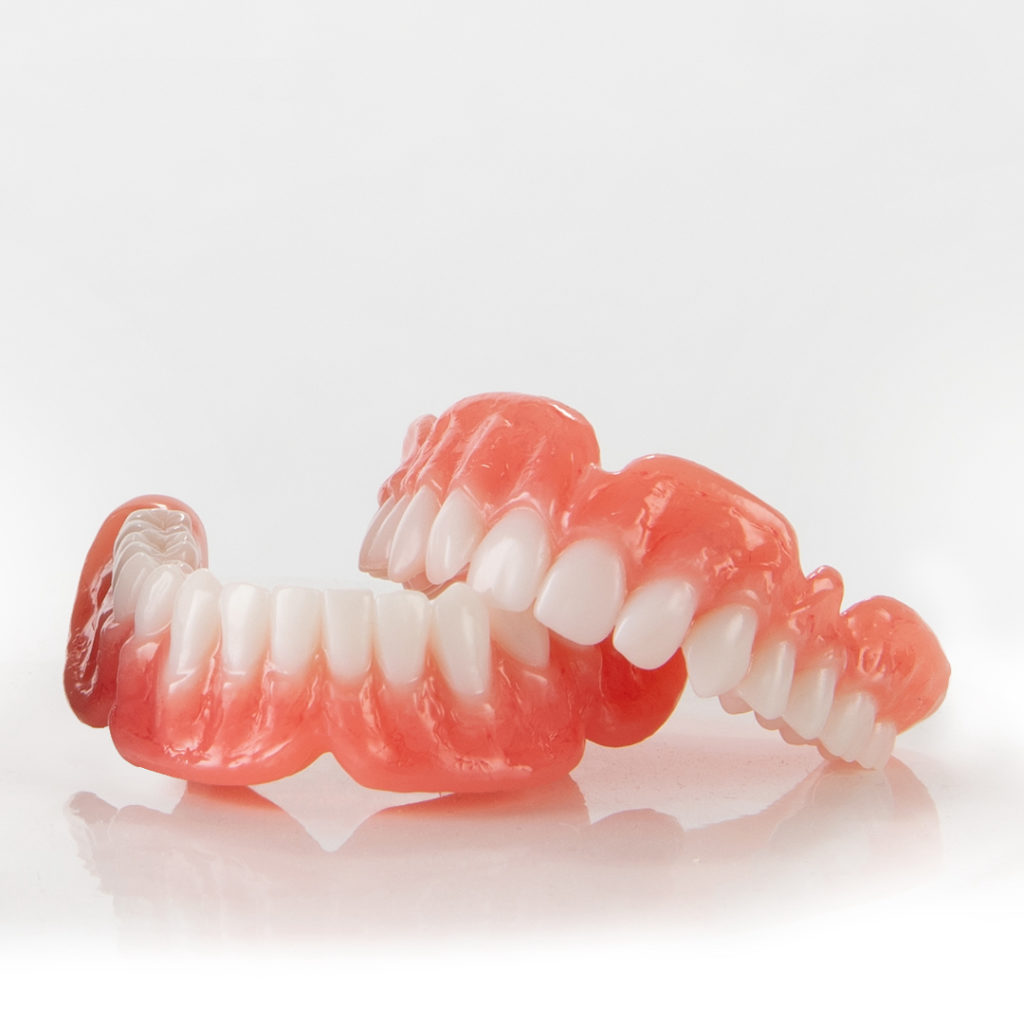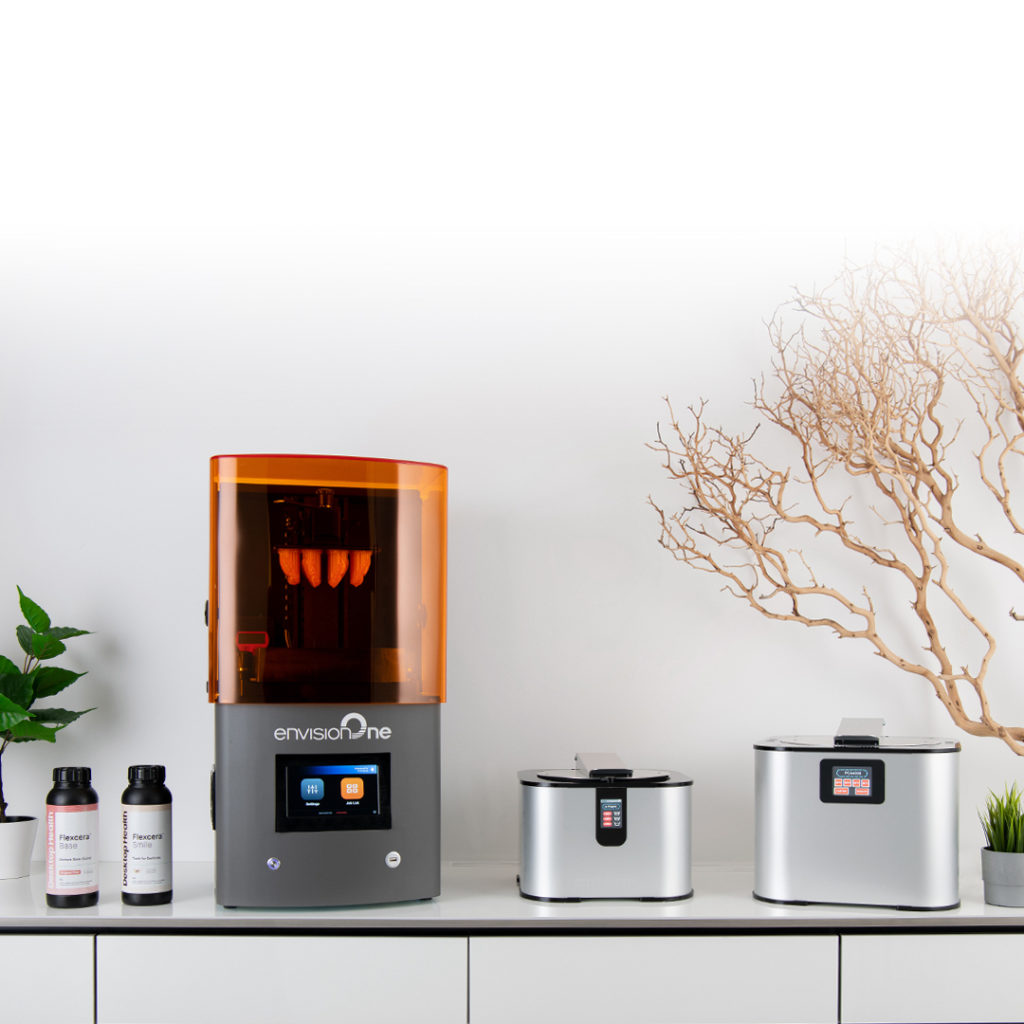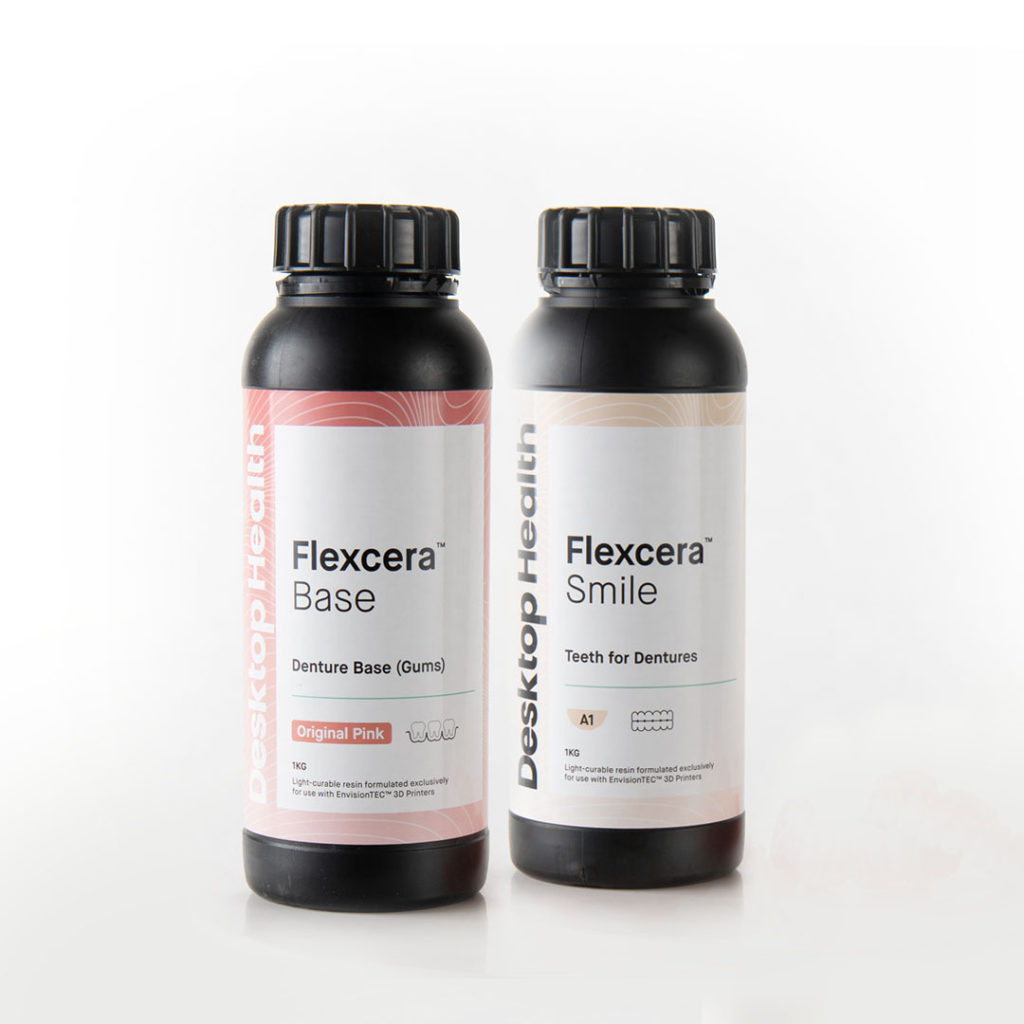
A new CE Mark certification backs up new dental-focused Flexcera 3D printing resins.
“Until now, the production of dentures has been limited to milling methods which are time-consuming, or 3D printing methods which have been brittle. For the first time, with Flexcera, we now have a complete digital denture solution that delivers on the four cornerstones of what should be expected from 3D printing: strength, high aesthetics, accuracy and speed,” said Prof. Patrik Zachrisson, Co-Founder and Vice President of the International Digital Dental Academy and a Partner Dentist at Digital Smile Studio in the United Kingdom.
Desktop Health 3D Printing
Launched just a few months ago, Desktop Health is a Desktop Metal business incorporating 3D printing technologies and materials from both the original Desktop Metal and the acquired EnvisionTEC.
The suite of 3D printing capabilities wrapped into the new Desktop Health is promising, comprising:
- Bioprinting
- Metal binder jetting
- Biocompatible polymers
- Biocompatible ceramics
- Biocompatible metals
There’s a lot in those offerings for a variety of medical applications. Among the application areas opened up for business are 3D printed medical devices like dental implants, hearing aids, prostheses, and surgical instruments; medical research in bioprinting with a variety of materials from cells to metals; and biocompatible parts made with the 3D Bioplotter, targeting uses like bone and cartilage regeneration, soft tissue fabrication, drug release, and, eventually, organ printing.
The technologies and materials in the Desktop Health portfolio start out at a base best described as extensive. But the business is just getting started, and so it has to launch somewhere. And that initial somewhere seems to be dentistry.
Desktop Health Digital Dentistry

The dental focus isn’t much of a shock, as there were certain signifiers out in the wild. In April, we noticed that Desktop Metal had filed a few new trademarks: 30MINUTECROWN, 30MINCROWN, and FLEXCERA. The USPTO description for the last of these reads:
“Mark For: FLEXCERA™ trademark registration is intended to cover the categories of resin for use in 3D printing applications including medical applications, dental applications, artificial teeth, artificial gums, orthodontic application and vision-based applications.”
While apparently Flexcera will be extending beyond dental applications, that’s where we’re beginning. And what a beginning: today Desktop Health has announced CE Mark certification for Flexcera resins “for use in 3D fabrication of high-quality dental prosthetics”:
“The CE Mark affirms that Flexcera resins meet the requirements of the European Medical Devices Directive, paving the way for Desktop Health to launch Flexcera resins to dental professionals within the European Union (EU) and other CE Mark geographies. Flexcera Base, which recently received U.S. Food and Drug Administration (FDA) 510(k) clearance, and Flexcera Smile are Desktop Health’s first formulated and optimized digital dental solutions,” the announcement notes.
Flexcera itself is an intriguing new introduction, as the announcement continues:
“Flexcera resin was developed with the strength of ceramic coupled with long chain chemistry to ensure optimal denture properties.”

More than 200 formulations were tested out to create the final Flexcera recipe, which leverages long-chain chemistry for “ceramic-like strength”. This combines with the flexibility of polymers to create dentures delivering on the four cornerstones Professor Zachrisson had noted in the quote at top:
- Strength
- High aesthetics
- Accuracy
- Speed
When it comes to strength, Desktop Health says Flexcera is three times more resistant to fracture and twice as resistant to moisture when compared to other dental materials. Specifically, the fracture resistance claim pits Flexcera Base resin against Lucitone 199, Lucitone HIPA, and Lucitone Digital Carbon. The moisture resistance claim comes from a third-party water absorption test between Flexcera Smile and NextDent MFH Bleach. Better moisture resistance means better prevention of staining and discoloration, which is helpful when dentures have a “lifelike tooth translucency.”
In terms of aesthetics, the visuals speak volumes. Smiles are a very personal business, so creating a set of dentures someone actually wants to wear is key. In this video, the denture base even has visible little vein designs in the gums:
No data are supplied when it comes to accuracy in particular, but for patient-specific dental wear, EnvisionTEC 3D printers have long been a staple. These systems have proved their value over and over again in the dental field, so it’s good to see them the go-to here — and, indeed, each bottle of Flexcera resin notes that it was “formulated exclusively for use with EnvisionTEC 3D printers.”
These machines are highlighted as well when it comes to speed. Desktop Health explains:
“When used exclusively with EnvisionTEC 3D printers, dental providers can print up to eight customized Flexcera dentures in less than two hours, delivering on the promise of same-day, high quality dental prosthetics.”
Commercial launch is set for Europe for “late summer 2021” and for the US and Canada by the end of this month. With CE Mark certification for both Flexcera Base and Flexcera Smile, as well as US FDA 510(k) clearance for Flexcera Base, dental practitioners have something to smile about in 3D printing today.
Via Desktop Health
